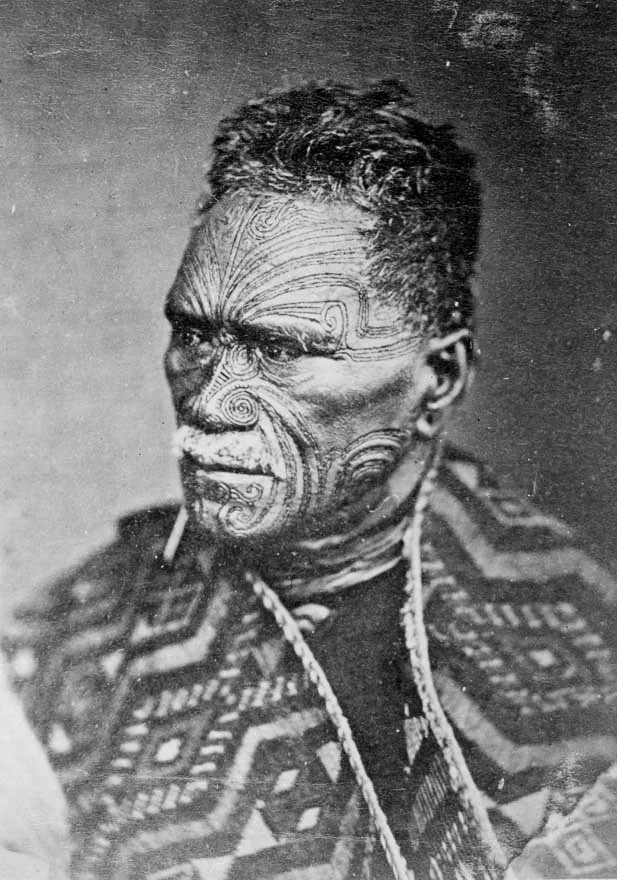The Return of a Huia Feather to Iwi
Webb’s is deeply honoured to have hosted a pōwhiri in our gallery this week, marking a significant moment in the journey of a treasured taonga: a huia feather gifted by Kīngi Tāwhiao in 1882.
It was a profound honour for Webb’s to host a pōwhiri in our gallery this week, celebrating a pivotal moment in the journey of a treasured taonga—a huia feather gifted by Kīngi Tāwhiao in 1882.
This pōwhiri symbolised the transfer of kaitiakitanga, with this precious feather now returning to the care of its iwi—Tainui. The feather is not only a tangible reminder of the now-extinct huia, but a testament to the enduring connections between iwi, whakapapa, and whenua.
Huia were a small endemic New Zealand songbird of the wattlebird family, known for their jumping abilities and beautiful plumage. They were also unique due to their sexually dimorphic features, with the female’s beak being long and curved and the male’s beak short and stubby.
These differences meant that the sexes used different techniques to feed, thus reducing competition.
This particular feather was gifted by Kīngi Tāwhiao to the postmasters and telegraphists introduced to him at a gathering at Alexandra on May 14, 1882. Of Ngāti Mahuta hapū in the Tainui confederation of tribes, Tāwhiao became the second Māori King upon the death of his father Pōtatau Te Wherowhero in 1860. He was considered a visionary leader, with a 34-year reign that took place over the most traumatic and turbulent era of Māori–Pākehā relations.
The descendents of the postmasters brought the feather to Webb’s and we take pride in having contributed to its continued journey.
Kīngi Tāwhiao was the second Māori King, leading the Kīngitanga movement from 1860 to 1894. In 1882 he gifted a huia feather to the postmasters and telegraphists in Alexandra. The descendants of the postmasters entrusted the feather to Webb’s, and we are proud to have played a role in its continued journey.
The resplendent blue-green tail feathers of the huia (kōtore huia) were always highly prized, however in pre-contact times they were tapu to Māori, with only chiefs and other high-ranking individuals permitted to wear them. At the time of European contact, the huia was widespread across the North Island but sparse; most of the records came from Ruahine, Tararua, and the Rimutaka ranges.
Eventually, the feathers became more widely popularised among both Maōri and Pākehā and were often exchanged for other coveted goods such as pounamu and shark teeth, or given as tokens of friendship and respect (as this particular example was). They were stored in intricately carved boxes called waka huia, which were hung from rafters — a craft which went on to influence contemporary expressions of industrial and architectural design in New Zealand.
In 1901 the visiting Duke of York was pictured wearing a huia feather in his hat, leading to an explosion of popularity for the feather in Britain. This sadly sealed the fate of the bird (although general hunting and loss of habitat also contributed to its extinction) and its last official sighting was on 28 December 1907. Remaining examples of huia feather act as a memento mori for this magnificent bird , and also as a reminder of the fragility of our unique and precious natural environment.
Such a clear and well-documented iwi connection is not evident in all taonga tūturu that comes to us, and it was a privilege to facilitate the significant handover of this particular example, reflecting Webb’s commitment to respecting and supporting the cultural and historical significance of taonga in Aotearoa.
We are proud to have played a part in ensuring that this huia feather continues its rightful journey in accordance with its whakapapa, and we extend our gratitude to the representatives of Ngāti Whātua Ōrākei and Tainui who joined us to honour this occasion.
Their participation reaffirmed the profound importance of safeguarding the mana of taonga Māori and preserving the stories they carry across generations.
The now-extinct huia bird, once revered for its striking plumage and deep cultural significance to Māori, was last officially sighted in the early 20th century.









